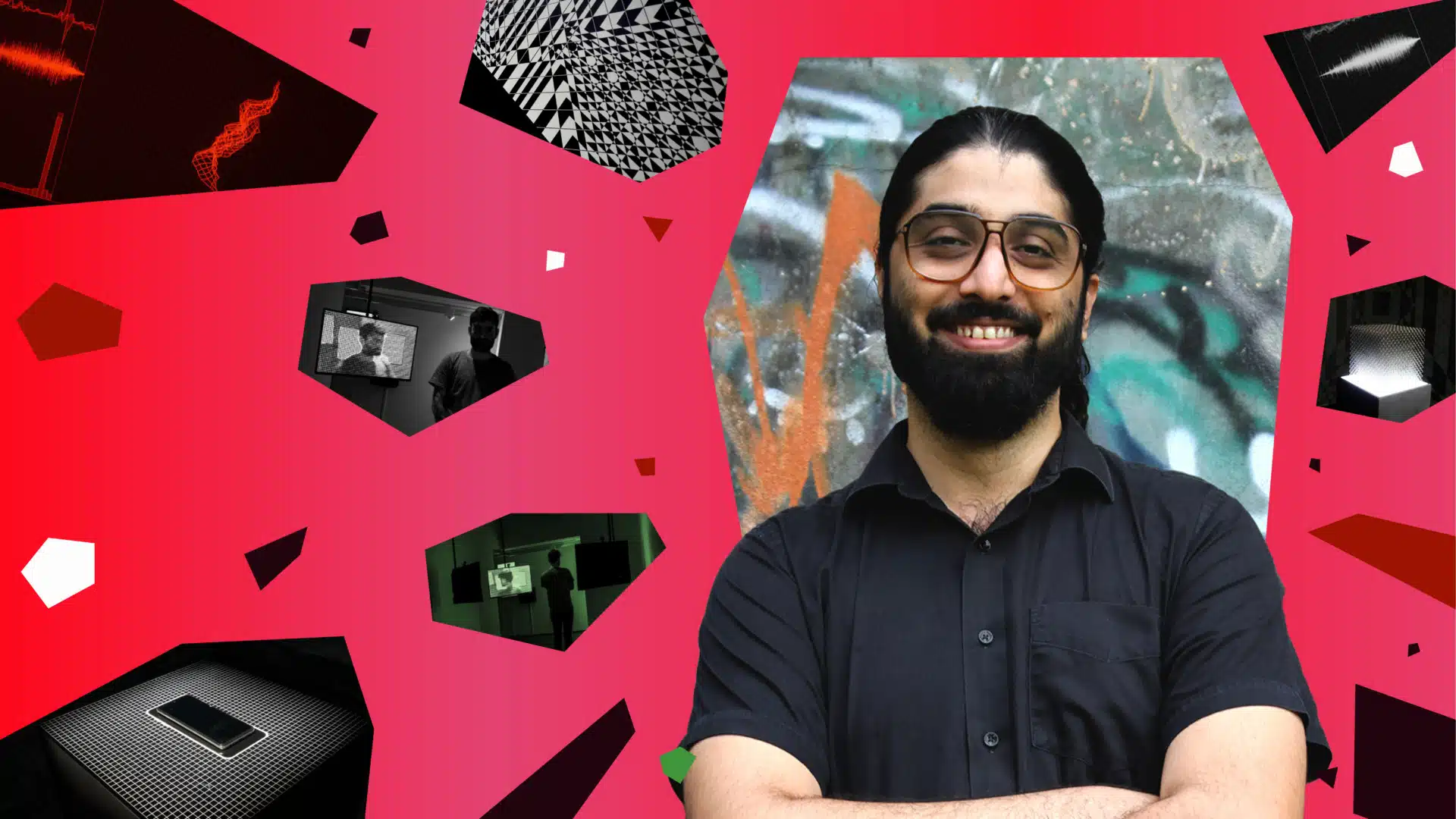“We are progressing into a new digital reality,” says the multitalented Varun Desai, an artist who works across a range of mediums, from electronic music production and engineering to creative coding and installation art. With an extraordinary mind and deftness for all things hardware and software, Varun’s ultimate ambition is to reach deeper and expose the building blocks of our reality today — the sound waves, pixels and voxels that make up digital and physical space — to give us a “look into the architecture of the world we are entering into, and make people familiar with what is underneath” the technological mesh that we are already living in.
For Varun, it is his role and responsibility to recontextualise all that we take for granted. “Something might look normal, but can become extraordinary and leave a profound effect on us when observed with intent,” he elaborates. “It is about putting things in the right context — a tree that we pass by everyday can become extraordinary when looked at from an artist’s, designer’s or a scientist’s eye.” This philosophy is loud and clear in Varun’s works. In the artist’s most recent solo show, Spectre, for example, he reveals the hidden world of audio and electromagnetic waves all around us, inviting the viewer to walk into immersive atmospheres — where one room may amplify the constant radiations from the viewer’s mobile phone to create loud discordant noise, and another may reflect back the viewers face to them but fragmented by a grid — all within a complex atmosphere made of code-generated video projections and sounds. The effect is a hyper-awareness of all that goes on underneath the most mundane of objects and entities, including our own bodies.
“I use code like a painter uses a paintbrush, as my primary tool”
Based in Kolkata, the artist starts his day with a hot cup of coffee in his studio, which is simultaneously a hi-tech workshop and a child’s sandbox. The space is jam-packed with all the tools for his various creative enterprises — Synthesizers and devices for music production, mixing and mastering; a 3D printer; and a workbench for soldering and engineering electronics. For an artist who swiftly moves from medium to mediums, this is by design. “My approach is constantly exploring and experimenting. Whenever I find myself stuck with one process, I can change what I am working on,” says the artist who is never working on only one thing at any given time.
And yet, for Varun, everything begins with code. “I use code like a painter uses a paintbrush, it is my primary tool,” he tells us when asked about the difference between his medium and more traditional visual art mediums. “It is absolutely the same as working with paint — I go into it with intention, and just like painting there is a lot of room to play with chance.” Using tools like Processing on iPad Pro, which he calls a “flexible software sketchbook,” the artist flexes his technical and imaginative muscles, producing rules and inputs for his system to produce dynamic artworks, more than the sum of their parts. This can take any number of forms, from optical art gifs in which mesmerising patterns of lines move and play tricks on the eye and perception to immersive projection and sound mapped rooms.
Download artist poster here >
Download artist poster here >
Recently, Varun has been playing with the many applications available on App Store designed specifically for iPad, for everything from sound recording to sketching and most excitingly, 3D scanning through the LiDAR (Light Detection and Ranging) sensor on iPad Pro. Using LiDAR technology, which lets him rapidly capture and generate 3D scans of spaces, instead of flat photographs, he has been taking to the streets of Kolkata, creating a three-dimensional reality in parallel to the ‘real’ trees, taxis and building facades. “The possibilities are massive now,” he shares. Not just Varun, but his thirteen-year-old daughter, has also taken to iPad Pro and its powers — “she’s an absolute pro at Procreate!” he exclaims with pride.
“Something might look normal, but can become extraordinary and leave a profound effect on us when observed with intent”
“Great art to me is one that opens up the doors to everything that came before it,” Varun says, describing his early love of storytellers like Roald Dahl and Bill Watterson, the creator of Calvin and Hobbes, and the precursors to electronic music from Detroit and the West coast of the US to early German experimentalism. In Varun’s case, the research into the past and its unravelling is what gives rise to his distinctly future-oriented art. “And the joy of being an artist is exactly this,” Varun says. “It’s the eureka moment of discovering a new perspective of looking at the world.”
Varun Desai will show at India Art Fair 2023 at the Digital Residency Hub in The Studio as part of the Digital Artist in Residence programme. The poster is Varun’s first composite image and story created completely on iPad Pro, made by scanning vehicles, objects, flora and people around his home city, Kolkata.



